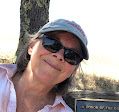I took an online course from creativity guru Eric Maisel last year. The focus of the course was coaching other writers, but I was so in need of a motivational kick in the pants as a writer/artist that I elected to coach myself while I took the course. For me, the most useful exercise during the twelve-week course was developing the practice of devoting fifteen minutes to a creative project, several times a day -- in and around the other responsibilities I had at the time.
What I learned during this exercise is that even when you're half-mad at your partner because his job means a move you don't want to make, and even when you have work to do to pay the bills that isn't all that engaging at the time, it turns out that if you can devote at least two or three fifteen-minute sessions a day to your own creative projects, you will find the energy you need to move forward.
Click Here to Read More..
What I learned during this exercise is that even when you're half-mad at your partner because his job means a move you don't want to make, and even when you have work to do to pay the bills that isn't all that engaging at the time, it turns out that if you can devote at least two or three fifteen-minute sessions a day to your own creative projects, you will find the energy you need to move forward.
During this time of relative chaos I was able to make amazing progress on a book proposal about the freelancing life (okay, it got shelved but I plan to reignite the project this winter) and I was able to sketch the sweet view out of our upstairs bathroom window in Ames, Iowa -- a view that I had savored for the five years we lived there. I was so pleased to be able to capture the essence of that view that I forgot to be sad about moving that day.
Fifteen minutes can do wonders. Try it: make something.



